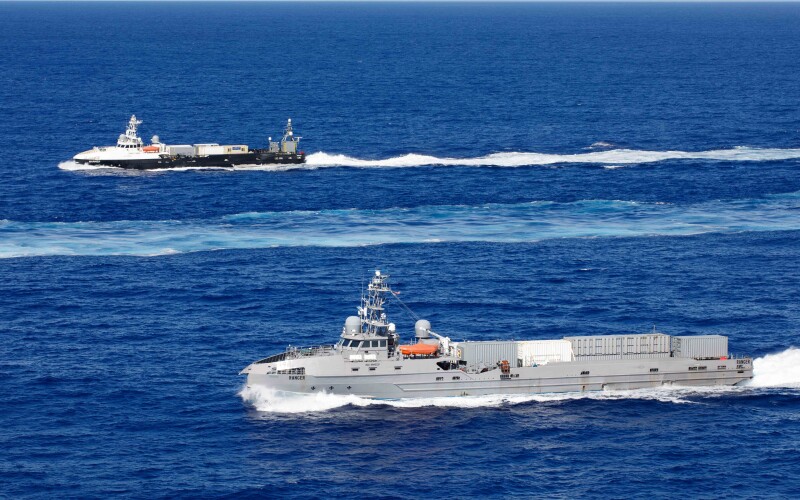The U.S. Navy reports it has reached a milestone in the development of Unmanned Surface Vessel (USV) capabilities, successfully completing a continuous 720-hour power test on an engine system designed for future USVs.
This achievement is part of a broader initiative to evaluate the durability and performance of engine systems for autonomous operation over extended periods. The completion of this final test marks the end of a crucial evaluation phase. Engine technology is vital to advancing unmanned naval operations and achieving the Navy's vision of a manned-unmanned Hybrid Fleet.
As mandated by the 2021 National Defense Authorization Act, the Navy was required to complete this 720-hour engine test before moving forward with the development of larger USVs. The engine testing was conducted by Precise Power Systems on behalf of Austal USA, with the trial taking place at Daimler Trucks North America’s Aftermarket Solutions facility in Tooele, Utah, from June 19 to September 5. The Navy’s Program Executive Office Unmanned and Small Combatants (PEO USC) and the Unmanned Maritime Systems program office (PMS 406) oversaw the demonstration.
“This milestone marks a pivotal advancement in our naval strategy, as it enhances our capabilities in unmanned operations," said Rear. Adm. Kevin Smith, head of PEO USC. "Successfully demonstrating a power system that can sustain autonomous operations for 30 days without maintenance not only bolsters our readiness but also sets the stage for a truly integrated manned-unmanned Fleet, ensuring we remain at the forefront of maritime innovation.”
The U.S. Navy is developing uncrewed vessels to enhance operational flexibility, reduce risk to personnel, and improve mission efficiency, particularly in challenging or high-risk environments. The Navy sees these vessels as key to realizing its future manned-unmanned Hybrid Fleet, expanding the the service's capabilities while reducing costs.
Throughout the 720-hour test, no human intervention, maintenance, or corrective actions were permitted on the equipment. The successful completion of this test demonstrates that the MTU 8V4000M24S engine model is now certified for potential use on future USV platforms. This milestone confirms that the propulsion system is robust enough to sustain an unmanned vessel for up to 30 days without the need for maintenance. The engineering team will leverage insights gained from the test to refine future engine designs, further improving their reliability and performance beyond the current standard.
Prior to this test, five teams successfully completed their separate 720-hour testing milestones. The successful teams include:
- Bollinger and Carter Machinery on behalf of Caterpillar in Chesapeake, Va. was the first team to achieve this milestone in December of 2023. They demonstrated sufficient mechanical reliability of the 1550 kw Caterpillar 3512C model engine.
- Fincantieri Marinette Marine (FMM) and Carter Machinery on behalf of Caterpillar in Chesapeake, Va. demonstrated mechanical durability of the Caterpillar 2300 kW rated 3516 main propulsion diesel, lube oil and fuel system.
- Gibbs & Cox and Southwest Research Institute in San Antonio, Texas on behalf of Cummins also validated the reliability of the QSK95 diesel engine paired with an ABB AMG 0560M04 LAE generator.
- Huntington Ingalls Industries (HII), in partnership with the U.S. Coast Guard, conducted a 720-hour demonstration on behalf of MTU of the MTU 20V 4000 M93L, a main propulsion diesel engine configuration.
- L3 Harris, on behalf of Cummins, validated the reliability of the QSK60 diesel engine, a main propulsion diesel engine configuration, and the QSM11, a marine diesel generator set in Camden, N.J.
“This milestone is a significant step forward in the continued development of integrated unmanned surface capabilities. The successful execution of these tests highlights our commitment to deliver cutting-edge solutions that can meet the evolving needs of our Fleet,” said Capt. Matthew Lewis, program manager of the Unmanned Maritime Systems program office.




.jpg.small.400x400.jpg)
